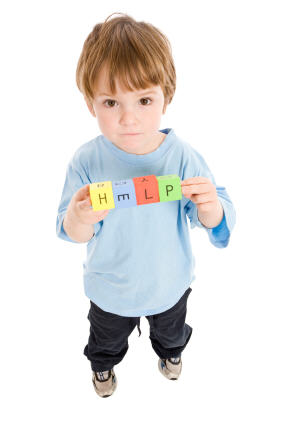
Healing Children's Trauma:
How Parents, Caregivers and Teachers Can Help
by Meredith White-McMahon, Ed.D
Trauma and abuse disrupts the normal course of brain development and the potential implications of this cannot be ignored. Exposure to neglect and abuse may result in reduced ability to seek rewarding relationships and a reduced commitment to societal and cultural values. Artificial and “quick” rewards become attractive. Unmet bonding needs increase allure to gangs, sects, and cults with violent and authoritarian values, which can create safety issues for abused and traumatized young people. While therapy is required for the child to restore integrated brain functioning, parents and caregivers can also provide support and help to create new experiences that promote new ways of thinking, feeling, and behaving.
These strategies are good for anyone but can have a very powerful effect on abused young people by helping them cope with their stress and channel their energy in a productive way. The strategies are intended to be implemented in a natural way, on an “as needed” basis, and in conjunction with the therapist and the therapy process. The goal in each case is to provide experiences for the young person that are supportive, caring, and provide success. In every situation, expectations should be reasonable, clearly articulated, and consistently positively reinforced.
Helping Strategies
Eliminate threat by providing a safe and predictable environment. Uncertainty creates stress and for traumatized kids that increases hypervigilance and emotional arousal. Be sensitive to their feelings and accept that over-reactions to situations may occur. Talk about them when they happen and reinforce better strategies for dealing with stress and fear.
Encourage a return to normal activities like going to school or participating in community activities. Routines and daily/weekly rituals re-focus their thinking in a positive way instead of repeatedly processing memories of the abuse. An awareness of the child’s needs for teachers and/or coaches allows them to provide the most positive situation possible and not inadvertently make the situation stressful or threatening.
Role model and encourage stress-reduction strategies. Physical activity, exercise, taking a “quiet minute”, deep-breathing, visualization, art, drama music, journaling, or goal-setting are all positive ways to reduce stress and deal with life’s “curve balls” in a positive way.
Provide a feeling of purpose through goal setting – both short and long term. By checking in on the goals on a regular basis you can provide feedback and validate progress. This can powerful set in motion a powerful cycle of empowerment, motivation, and achievement.
Encourage involvement in projects like community service or youth development organization membership. These can also help to create a feeling of purpose and empowerment. They learn they can channel their energy in either positive or negative directions and, over time, they come to realize that it is their own daily decisions that ultimately determine the course of their life (not the actions of another person).
Provide opportunities for enhancing personal control by teaching/implementing problem solving skills for daily issues and concerns they encounter. Most problem-solving approaches include the following steps: 1) defining the problem, 2) thinking about and identifying their feelings, 3) considering alternative solutions, 4) anticipating consequences, and 5) taking action based on the first 4 steps.
While these strategies can be helpful for those living and working with abused and traumatized young people, they are not a substitute for professional help. Self-destructive or violent behaviors are often seen by traumatized children to be normal and “just what they do.” Safety is the top priority and these behaviors require the help of trained mental health professionals.
In any case of suspected abuse or trauma, seek professional help. Professional help is important since abuse and trauma can have a lifelong impact on a child. Symptoms can lie dormant for decades and resurface many years later during exposure to a similar circumstance. It is only by recognition and treatment that trauma victims can hope to move past the impact of the trauma and lead healthy lives.
Referral to trained mental health professionals is critical.
September 20, 2012
RELATED ARTICLE:
The Many Faces of Trauma: Understanding Abused Children


